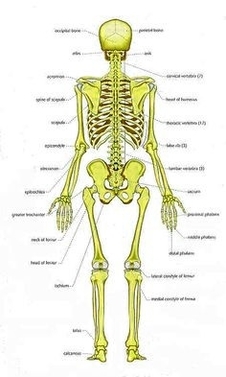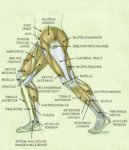The human skeleton, a marvel of biological engineering, serves as the body’s structural framework, providing support, facilitating movement, and protecting vital organs. The posterior view of the skeleton reveals structures obscured in the anterior view, most notably the vertebrae that span vertically from the sacrum to the skull.
Axial Skeleton
The axial skeleton, which forms the central core of the body, includes the skull, vertebral column, and rib cage.
1. Skull: The skull, composed of 22 bones, protects the brain. The bones of the superior portion, known as the cranium, shield the brain from damage. The bones of the inferior and anterior portion, known as facial bones, support the eyes, nose, and mouth.
2. Vertebral Column: The vertebral column, or spine, is the main support of the trunk. It houses the spinal cord within its neural arches. The vertebral column comprises 26 vertebrae, named by region: cervical (neck) – 7 vertebrae, thoracic (chest) – 12 vertebrae, lumbar (lower back) – 5 vertebrae, sacrum – 1 vertebra, and coccyx (tailbone) – 1 vertebra.
3. Rib Cage: The rib cage, consisting of 12 pairs of ribs, the sternum (breastbone), and the thoracic vertebrae, encloses and protects the heart and lungs.
Appendicular Skeleton
The appendicular skeleton includes the bones of the upper limbs, lower limbs, and the girdles that connect the limbs to the axial skeleton.
1. Upper Limbs: Each upper limb includes the humerus of the upper arm, the radius and ulna of the forearm, the eight carpal bones of the wrist, the five metacarpal bones of the palm, and the 14 phalanges of the fingers.
2. Lower Limbs: Each lower limb includes the femur of the thigh, the patella (kneecap), the tibia and fibula of the lower leg, the seven tarsal bones of the ankle, the five metatarsal bones of the foot, and the 14 phalanges of the toes.
3. Pelvic Girdle: The pelvic girdle, formed by two hip bones, connects the lower limbs to the axial skeleton.
4. Pectoral Girdle: The pectoral girdle, composed of the clavicles (collarbones) and scapulae (shoulder blades), connects the upper limbs to the axial skeleton.
Functions of the Skeleton
The skeleton performs several vital functions:
1. Support: The skeleton provides structural support for the body, allowing it to maintain its shape and withstand physical stress.
2. Protection: The skeleton safeguards vital organs. For example, the skull protects the brain, the rib cage shields the heart and lungs, and the vertebrae encase the spinal cord.
3. Movement: The skeleton facilitates movement by providing attachment points for muscles. When muscles contract, they pull on bones, generating movement at the joints.
4. Mineral Storage: Bones act as the bodys warehouse for minerals like calcium and iron.
5. Blood Cell Production: New blood cells are produced by the red bone marrow inside our bones.
In conclusion, the human skeleton, particularly its posterior view, is a complex and intricate system that plays a crucial role in numerous bodily functions. Its design and structure have been honed by millions of years of evolution, making it a perfect example of nature’s ingenuity..


